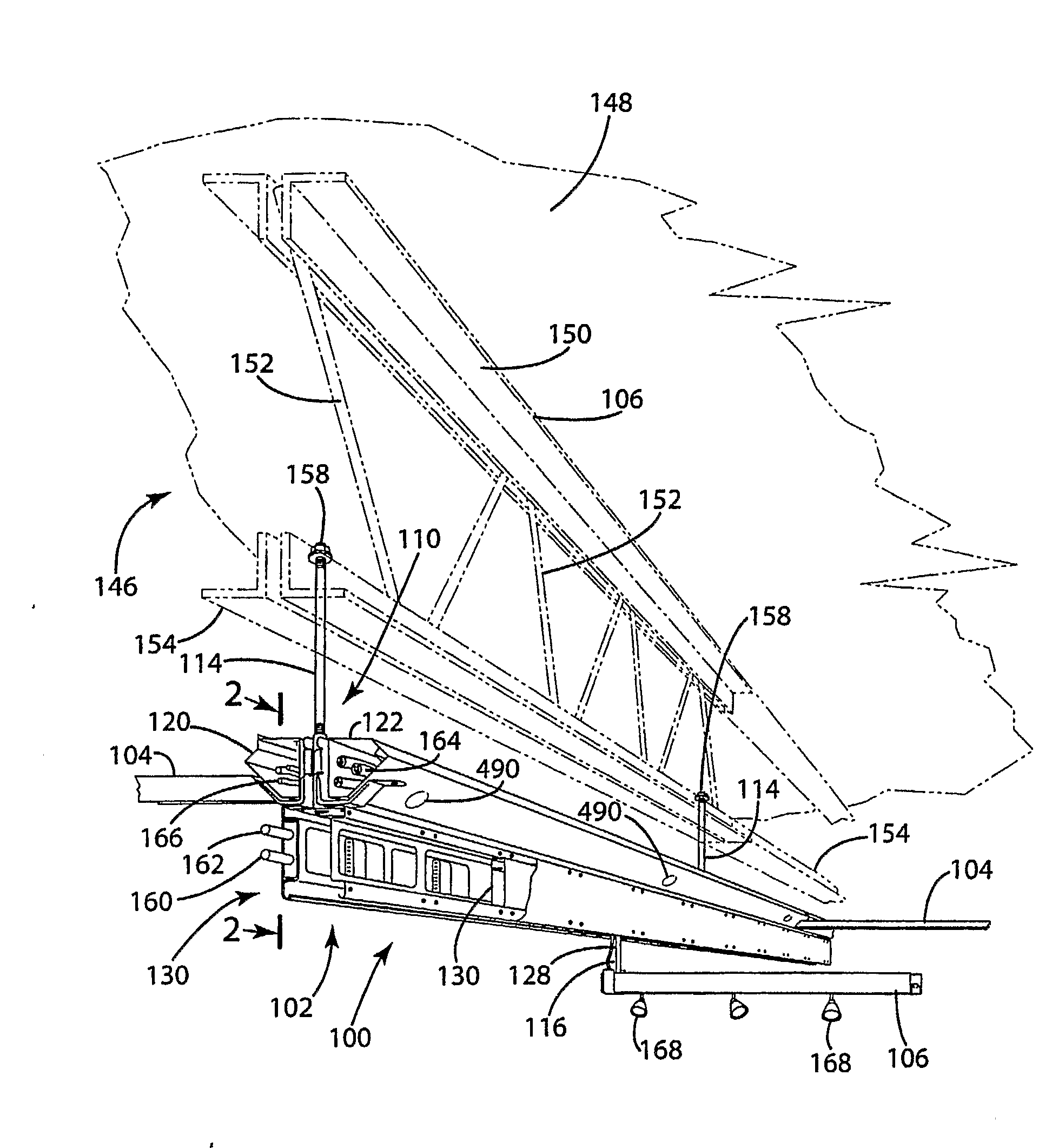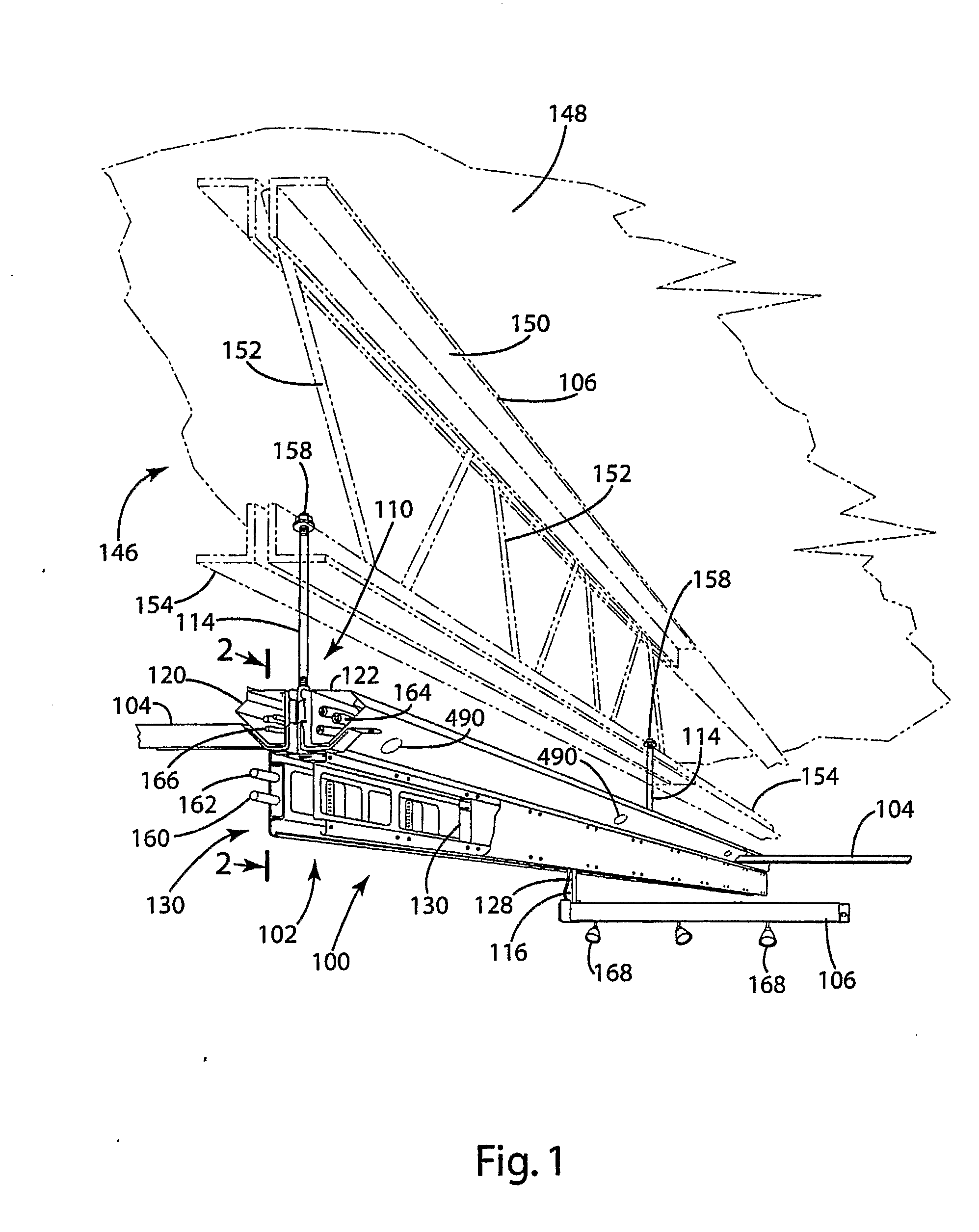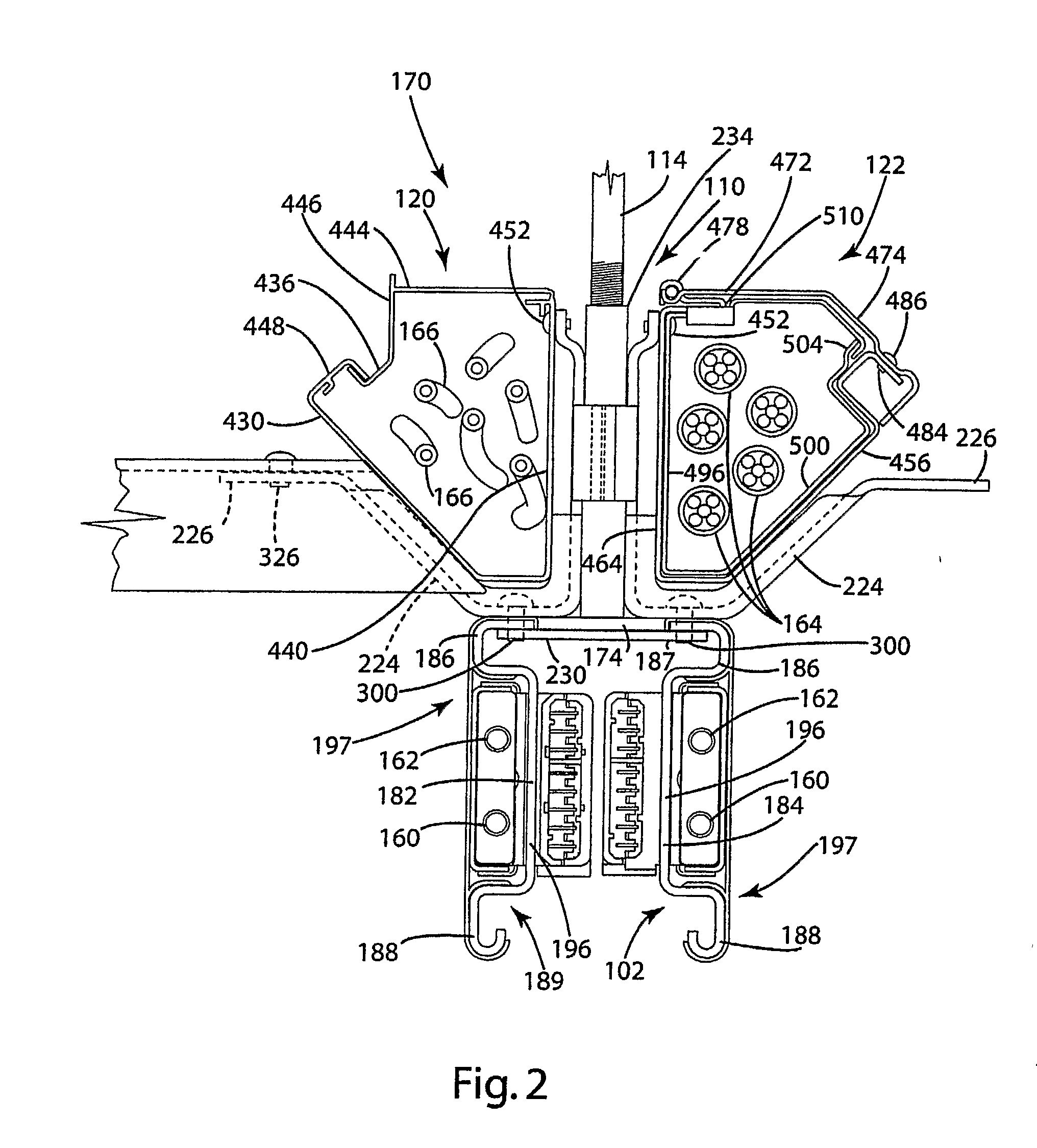Power and Communication Distribution Using a Structural Channel Stystem
a technology of structural channel system and distribution channel, which is applied in the direction of girders, filing appliances, machine supports, etc., can solve the problems of inflexibility, difficult, costly and time-consuming to change the structure of the commercial interior, and the complexity of planning and managing the commercial interior
- Summary
- Abstract
- Description
- Claims
- Application Information
AI Technical Summary
Benefits of technology
Problems solved by technology
Method used
Image
Examples
Embodiment Construction
[0186]The principles of the invention are disclosed, by way of example, within a structural channel system 100 illustrated in FIGS. 1-92. A perspective view of major components of the structural channel system 100, as installed within a building structure which may comprise a reconfigurable commercial interior, is illustrated in FIG. 1. A structural layout of the structural channel system 100 employing certain of its components is illustrated in FIG. 4. The structural channel system 100 comprises an overhead structure providing significant advantages in environmental workspaces. As examples, the structural channel system 100 in accordance with the invention facilitates access to locations where a commercial interior designer may wish to locate various functional elements, including lighting, sound equipment, projection equipment (both screens and projectors), power poles, other means for energizing and providing data to and from electrical and communication devices, and other utilit...
PUM
 Login to View More
Login to View More Abstract
Description
Claims
Application Information
 Login to View More
Login to View More - R&D
- Intellectual Property
- Life Sciences
- Materials
- Tech Scout
- Unparalleled Data Quality
- Higher Quality Content
- 60% Fewer Hallucinations
Browse by: Latest US Patents, China's latest patents, Technical Efficacy Thesaurus, Application Domain, Technology Topic, Popular Technical Reports.
© 2025 PatSnap. All rights reserved.Legal|Privacy policy|Modern Slavery Act Transparency Statement|Sitemap|About US| Contact US: help@patsnap.com



